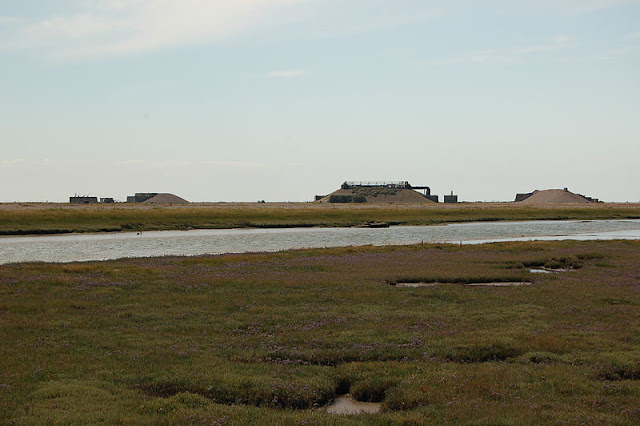Go for a walk anywhere on the British coast, and there will always be something of interest: an odd geological feature maybe, or a remnant of a shipwreck, an old lighthouse, a seal poking its head out of the water - the list is endless. But there can be few places to rival
Orford Ness for unusual sights to feast the eyes on. This spit of land just off the Suffolk coast, a few miles south of Aldeburgh, was once used for a variety of weapons research projects, including one for radar headed up by Robert Watt (see the previous post). Among the strange relics left behind from this time are the remains of a model atomic bombing range, the transmitter building used by Watt’s team and a tower-like building completed in 1928 and used for testing a ‘rotating loop’ navigation beacon. To get to the spit there are crossings by boat available – although they are considerably less frequent outside high season, as we found to our cost when we arrived on a weekday in April a few years ago to find no boats making the crossing. Walkers must keep to the designated trails due to the dangers of unexploded ordnance.
There is a red-and-white striped lighthouse at the end of Orford Ness which was built in 1792 and became automated in 1965, making it the first automated lighthouse in mainland Britain. Just inland is a forest called Rendlesham Forest which in 1980 had its
“Roswell moment” when dozens of USAF personnel from a base in the area reported seeing a number of unexplained lights and other phenomena. The lights appeared to descend into the forest, moving between the trees, prompting fears of a UFO landing. However, hardened sceptics insisted it was the lights of Orford Ness lighthouse which were responsible for the sightings. The village of Orford itself is a pleasant spot, with a relic of much earlier military activity in the form of
Orford Castle. This was built by Henry II, and construction began in 1165. Only the keep now remains, five floors in all, which includes three square turrets, a chapel, a kitchen and other chambers.
Map of the area.

No comments:
Post a Comment